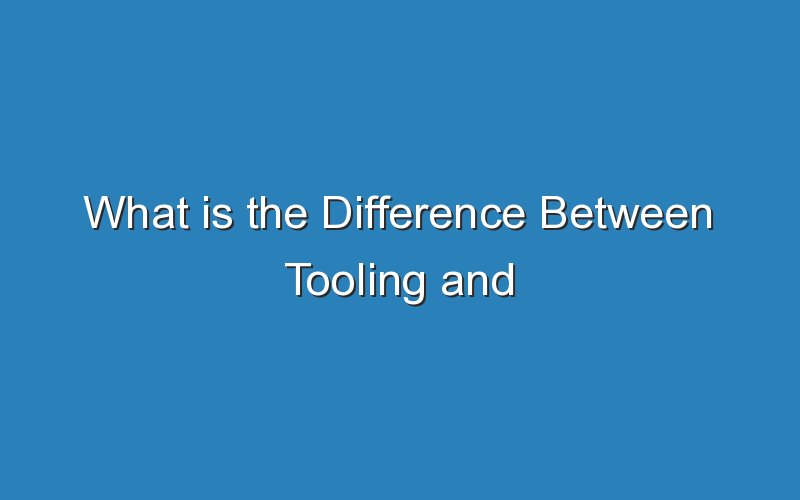When discussing manufacturing processes, one of the most common questions is: What is the difference between tooling and production? While tooling is a very important part of any production process, there are several differences between tooling and production. Aside from the differences in cost, the two are very different in their overall effects on a product’s development and quality. If you aren’t sure what each term means, consider the following examples to help you decide which is right for your company.
A tool is a mechanical or composite mold. These are usually used for prototyping and can be considered “soft” tools. Depending on the manufacturing process, you can use either type of tool. For example, a hard tool is used to produce one or many components of a product, while a soft tool is used for multiple production runs. Whether you need a prototype or a high-volume run, there are advantages and disadvantages to each.
Another difference between hard tooling and production is the level of precision. A hard tool is used to create intricate parts and precision. A soft tool is a mold for a single product and has a lower level of accuracy. A soft-tooling product will cost you less than a hard-tooled component. However, a soft-tooled product requires high-precision blueprints, and is generally not considered a low-cost alternative.
When a product is not fully developed, it may be a good idea to make a prototype before investing in full-scale tooling. This way, you can test the product first and make sure it will work before spending too much money. In addition to saving time, soft-tooled products also retain their quality. Regardless of the type of production, it’s worth investing time in developing a prototype. You won’t have to invest a lot of time, money, and effort in the development process.
There are some notable differences between prototyping and full-scale production tooling. The former is used to make prototypes, while the latter is used for a series of orders. The main difference between soft and hard tooling is the level of detail that the tool has. In order to design a composite part, you should start with the right soft-tooling. This way, you’ll be able to see what it is like.
In addition to prototyping, tooling is essential to production. In general, prototype tooling is a more expensive option than full-scale tooling. This type of tooling is necessary for high-volume manufacturing because it is critical to a product’s success. It’s important to note that a tool is different from a piece of equipment. For example, a machine that produces molds and is used to make a composite model is a hard-tool.
Tooling is another important factor in production. If you’re making prototypes, soft tooling is an excellent option for your production needs. These types of products are designed to be used in production and require less precise tooling. For instance, a prototype is more flexible and can be changed and improved over without needing to be remade. In contrast, a prototype can be changed and altered at any time without having to redesign it.
When it comes to manufacturing, tooling is a crucial step. From prototypes to bridges, prototype tooling plays a crucial role in building parts. In addition, the two types of tooling are different, and the right tooling can impact your business’s bottom line. It’s important to choose the best approach for your sheet metal tooling process. With the right approach, you can ensure that your product is of a higher quality, is delivered on time and stays within budget.
There are many differences between hard and soft tooling. Both methods have their advantages and disadvantages. While a prototype uses more complex tooling, hard-tooling is the preferred choice for a larger quantity of finished goods. Its versatility is essential for production, but it can also be a useful tool for prototypes. A prototype can be used for prototyping. There are also advantages to soft tooling and hard-tooling.
In addition to prototyping, production tooling is necessary for high-volume production. But the initial investment in tooling is not cheap, and it might be best to consider bridge tooling if you only have a limited budget. Then, you can proceed with production tooling. Once the prototype is ready for mass production, it is time to decide on the proper type of production tools. Unlike the first prototype, a bridge is not designed to be used for full-scale production.

